| 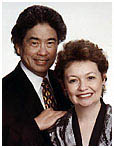 Effective
Teaching...
Effective
Teaching...
by Harry and Rosemary Wong
September
2004
How Procedures
Saved a Teacher's Life
If you lost consciousness and passed out while teaching
your class, would your students—your kindergarten students—know
what to do? Heather Chambers’ kindergarten students
saved her life.
Heather Chambers, who teaches kindergarten in Denton, Texas, had
a diabetic seizure and collapsed in class. She describes,
“Nothing compares to what happened on Friday. You see,
I'm almost 7 months pregnant and was taking four insulin shots a
day to treat gestational diabetes.”
Because her class knew the procedure of what to do, they saved
her life. Chambers already had great success with the procedures
she used in her first year as a kindergarten teacher, however, as
a result of hearing us (Harry) during the subsequent summer, she
chose to implement additional procedures in her second year that
ended up saving her life—literally!
Because of her health condition, Chambers developed a very
simple, but highly effective procedure for her class in case she
had a seizure.
She explained her diabetic condition and insulin treatment to her
class. She said there was a small possibility that "Mrs.
Chambers could fall down and be so sound asleep that you won't be
able to wake me." She told them not to be afraid and
that people would come to help her if they would remember to do
what she was about to teach them.
First, she assigned one of her most calm students to go immediately
to the nurse, if she had a seizure. She also assigned another
student as a back-up.
She assigned another student to go next door to Mr. Williams’
room (another kindergarten teacher) and tell him that Mrs. Chambers
needed help. She assigned a back-up student here, too.
She told the rest of the class that it was their job to watch over
her until help came. To do this they were instructed to sit
quietly on their circle time carpet, criss-cross applesauce with
their hands in their laps.
Periodically, she would remind them of this procedure and
the class would verbally go over what they would do.
Chambers says, “On January 17th, I was standing in front
of my short filing cabinet, when I passed out. On the way
down, I cut my forehead open and began bleeding badly. When
I landed, I began to have a seizure. The student that was
assigned to go to the nurse momentarily froze. Another student
very quickly reminded her of her job and off she went, as did the
other child to Mr. Williams class.
“When the nurse arrived in my room, she said it was perfectly
quiet; all of my students were sitting, as taught, on the rug.
I had stopped breathing by this time and my eyes were wide open
with fixed and dilated pupils. She had the class removed quickly
and began to bring me back. My pulse was beginning to weaken.
“It amazes me that for children so young, they were able
to follow procedures to almost perfection. They didn't have
to figure out what to do. I didn't have to be conscious to
tell them what to do; they already knew. The procedure was
there to guide them, because Lord knows I wasn't the one leading
them that day. They saved my life and that of my unborn child.
They were that well-oiled machine that you explained to us this
summer.
“Classroom procedures saved my life.”
Chambers’ First Day of School
Heather Chambers begins her fourth year of teaching this year.
Here are the procedures she will teach on the first day of school.
My First Day of School
2004-2005
Day One
Kindergarten
Classroom Management
Introduce
- How to come into class and start the day
- Learning station procedures
- Computer and listening center procedures
- Love and Logic
Teach and Practice
- Restroom and drink procedures
- Line-up and hallway procedures
- 1,2,3 Look-At-Me
- Cafeteria procedures
- Playground procedures
- Cleaning the classroom for the next day procedures
Instructional Program
- Social Studies: Introduction to School:
finding our way around the classroom and the school
- Reading (Aloud): Miss Bindergarten
Goes to Kindergarten, David Goes to School, No David!
- Writing: Learning to write our first
name practice
- Mathematics: Calendar Math and working
with 0-5
- Learning Stations: Puzzles, Alphabet
Bingo, Home Living, Block Play, Listening Center
Do You Have Emergency Procedures?
If you think that Heather Chambers’ story could not
happen to you, think again.
As this column is being written, Hurricane Charley hit Florida,
the worst hurricane to hit Florida in 12 years and the worst to
hit the west coast of Florida in over a century.
Weather problems are a natural phenomenon, whether it is a snowstorm,
tornado, hurricane, or earthquake. We also live in an era
of potential terrorist attacks, increased violence on campuses from
outside sources, and kidnappings. Our best defense for any
of these situations is training teachers and students in emergency
procedures. We also live in a litigious climate that subjects
us to lawsuits should children become injured, killed, or unaccounted
for.
September is the perfect month for teaching and/or reminding students
of safety procedures for situations such as a lockdown, fire, or
earthquake, how to use the crosswalk, waiting on the curb for bus
pickup, and coming to school and returning home. In many states,
teachers are required to teach safety procedures. They are
to be documented in a teacher’s lesson plan book and could
be used later in case of an accident. Lesson plan and grade
books are considered legal documents by the court. There was
a time when a teacher taught safety just because you cared about
kids. Now, it can protect a teacher in a lawsuit.
To prepare for an emergency, at South Grand Prairie High
School in Texas, administrators regularly practice their lockdown
procedures.
Teachers have informed their classes of the procedures and have
rehearsed these with their students. The lockdown drill provides
an opportunity to evaluate procedures. For instance, administrators
discovered that students in the theater were not able to hear the
announcement on the public address system.
Thus, the administrator responsible for sweeping that part of the
building now knows to check the theater to see if students are present.
School administrators have an evacuation plan that accounts
for every student, even if a particular student is not in the classroom.
If a crisis occurs during lunchtime or a passing period, administrators
can account for all students.
They’ve identified locations on campus that personnel can
go in case of biological and chemical emergencies. The school
mails a letter to parents to remind them to review the emergency
procedures at home as well.
Each classroom houses a customized folder with everything
the teachers might need, from pens to a highlighted escape route.
There's also a roster with the name of every student who takes classes
in those rooms. Emergency duffel bags with bullhorns, flashlights,
maps, and first-aid kits are placed throughout the school.
The staff and the students are trained in case an emergency arises.
Laurie Jay, a teacher in Saskatoon, Canada, has her class roster
affixed next to the doorjamb so that as she leaves the room with
her class, all she or a substitute teacher has to do, is reach up
for the class roster and have a list immediately handy to take the
class roll.
In California, classrooms routinely practice “duck and cover”
drills. In case of earthquake or terrorist attack, all a teacher
has to do is call out “duck” and every child knows what
to do instantly.
A Generation of Threats
While some contend that all of the procedures for the violence
in nature and society being taught create a level of stress and
anxiety in students, we are reminded that it is our responsibility
to create a safe and caring environment. Effective teachers
and schools have a worst-case scenario handbook with procedures
rehearsed and ready for implementation.
The handbook should have a simple plan, and it should be in every
classroom. Security experts say the plan should include classroom
and building evacuation procedures and a list of whom to contact
in an emergency and instructions for dealing with a multitude of
situations. It should involve the entire school, custodians,
students, nurses, volunteers, cafeteria workers—anyone who
is regularly on campus.
If your school does not have such a plan, talk it over with your
administrator and suggest the beginning of one. And, what
are you doing in your classroom that addresses life-threatening
situations? We have received many letters that state, “Procedures
saved my life!” While it’s meant in a figurative
sense, in the case of Heather Chambers, procedures really did save
her life.
Procedures bring order to chaos, logic to confusion, and care to
anxiety. They are our best defense in these troubling times.
Do your part and prepare yourself and your students. Procedures
can and DO save lives!
 For a printable version of this article click
here.
For a printable version of this article click
here.
Harry & Rosemary Wong products: http://www.harrywong.com/product/
Email Harry Wong: harrywong@teachers.net
Gazette Articles by Harry & Rosemary Wong:
If you spot a link that appears to be out-of-date, please alert us at webmaster@teachers.net!
- A Grateful Goodbye After 15 Years (Jun 2015)
- Love, Marriage, and Babies, Oh My! (May 2015)
- Retention Rate Is 100 Percent (Apr 2015)
- Teacher Effectiveness and Human Capital (Mar 2015)
- Training Teachers to Be Effective (Feb 2015)
- Making Deals Is Ineffective (Dec 2014 / Jan 2015)
- Retrieving and Carrying Electronic Devices (Nov 2014)
- Sharing to Succeed (Oct 2014)
- How a University Prepares Its Students (Sep 2014)
- Effective Teaching (Aug 2014)
- Your Future Is in Your Hands (June/July 2014)
- The Classroom Management Book (May 2014)
- When Students Succeed; Teachers Succeed (April 2014)
- Teaching New Teachers How to Succeed (March 2014)
- Execute and Praise (February 2014)
- Shaping a Solid Foundation (Dec 2013 / Jan 2014)
- The Most Misunderstood Word (November 2013)
- How to Start Class Every Day (October 2013)
- Prevention: The Key to Solving Discipline Problems (September 2013)
- Planning, Planning, Planning (August 2013)
- Are You THE One? (June / July 2013)
- Practical Examples That Work (May 2013)
- A Disability Is Not a Handicap (Apr 2013)
- Totally Inexcusable (Mar 2013)
- Be Proud of Public Education (Feb 2013)
- Structure Will Motivate Students (Dec 2012 / Jan2013)
- Orchestrating the Classroom (Nov 2012)
- The Lasting Impact of Instructional Coaching (Oct 2012)
- Learning, Laughing, and Leaving a Legacy (Sep 2012)
- Twenty-two, First Year, and Legit (Aug 2012)
- A Master Teacher of Teachers (June/July 2012)
- Where Going to School Means Success (May 2012)
- A Nationally Celebrated High School (Apr 2012)
- The Highest Rated School in New York City, Part 2 (Mar 2012)
- The Highest Rated School in New York City, Part 1 (Feb 2012)
- The Importance of Culture (Dec 2011 / Jan 2012)
- You Can Teach Classroom Management (Nov 2011)
- Seamless, Transparent, and Consistent (Oct 2011)
- Coaching Teachers to Be Effective Instructors (Sep 2011)
- How a Principal Creates a Culture of Consistency (Aug 2011)
- Graduation Begins in Your Classroom (June/July 2011)
- The Inspiration of a Mother (May 2011)
- How to Be an Effective Leader (Apr 2011)
- Learning Objectives: The Heart of Every Lesson (Mar 2011)
- Even Shakespeare Had Structure (Feb 2011)
- Effectiveness Defined: It's Not a Mystery (Dec 2010 / Jan 2011)
- Surviving Without a Principal (Nov 2010)
- Achieving Greatness: Locke Elementary School, Part 2 (Oct 2010)
- Teaching Greatness: Locke Elementary School, Part 1 (Sep 2010)
- Effective from the Start (Aug 2010)
- Ten Year Summary of Articles, 2000 to 2010 (June/July 2010)
- The Success of a Culture of Consistency (May 2010)
- Training Teachers to Be Effective (Apr 2010)
- Learning to Teach, Teaching to Learn (Mar 2010)
- Turning Teaching Dreams into Reality (Feb 2010)
- Dreams and Wishes Can Come True (Dec 2009 / Jan 2010)
- Success in a State Controlled School (Nov 2009)
- Inner City Is Not An Excuse (Oct 2009)
- Exceeding All Expectations (Sep 2009)
- Teachers Are the Difference (Aug 2009)
- Nine Year Summary of Articles, 2000 to 2009 (Jun/Jul 2009)
- Teachers Are the Greatest Assets (May 2009)
- The Tools for Success (Apr 2009)
- Assessing for Student Learning (Mar 2009)
- To Be an Effective Teacher Simply Copy and Paste (Feb 2009)
- The Sounds of Students Learning and Performing (Dec 2008)
- A School That Achieves Greatness (Nov 2008)
- Boaz City Schools: Professional Learning Teams (Oct 2008)
- It Was Something Close to a Miracle (Sep 2008)
- A Computer Teacher Shows the Way (Aug 2008)
- Eight Year Summary of Articles, 2000 to 2008 (Jun/Jul 2008)
- An Amazing Kindergarten Teacher (May 2008)
- Schools That Beat the Academic Odds (Apr 2008)
- Academic Coaching Produces More Effective Teachers (Mar 2008)
- Coaches Are More Effective than Mentors (Feb 2008)
- Wrapping the Year with Rap! (Dec 2007/Jan 2008)
- The Floating Teacher (Nov 2007)
- Taking the Bite Out of Assessment—Using Scoring Guides (Oct 2007)
- Ten Timely Tools for Success on the First Days of School (Sep 2007)
- First Day of School Script - in Spanish, Too! (Aug 2007)
- Seven Year Summary of Articles, 2000 to 2007 (Jun 2007)
- Effective Teachers End the Year Successfully (May 2007)
- Training Gen Y Teachers for Maximum Effectiveness (Apr 2007)
- Classroom Management Applies to All Teachers (Mar 2007)
- Students Want a Sense of Direction (Feb 2007)
- Rubrics in Two College Classes (Dec 2006/Jan 2007)
- How to Write a Rubric (Nov 2006)
- Assessing Student Progress with a Rubric (Oct 2006)
- A 92 Percent Homework Turn-in Rate (Sep 2006)
- Effective Teachers Are Proactive (Aug 2006)
- Five Year Summary of Articles (Jun 2006)
- Hitting the Bulls Eye as a Beginning Teacher (May 2006)
- They're Eager to Do the Assignments (Apr 2006)
- The Success of Special Ed Teachers (Mar 2006)
- What Teachers Have Accomplished (Feb 2006)
- Fifty Years Ago, The Legacy (Dec 2005/Jan 2006)
- The Emergency Teacher (Nov 2005)
- Classroom Management Is Not Discipline (Oct 2005)
- A Successful First Day Is No Secret (Sep 2005)
- The Most Important Factor (Aug 2005)
- Four Year Summary of Articles (Jul 2005)
- Improving Student Achievement Is Very Simple (Part 2) (Jun 2005)
- Improving Student Achievement Is Very Simple (Part 1) (May 2005)
- Never Cease to Learn (Apr 2005)
- His Classroom Is a Real Life Office (Mar 2005)
- The Power of Procedures (Feb 2005)
- The First Ten Days of School (Jan 2005)
- PowerPoint Procedures (Nov/Dec 2004)
- The Saints of Education (Oct 2004)
- How Procedures Saved a Teacher's Life (Sep 2004)
- How to Help Students with Their Assignments (Aug 2004)
- Three Year Summary of Articles (Jun/Jul 2004)
- His Students are All Certified (May 2004)
- What to Do When They Complain (Apr 2004)
- A Well-Oiled Learning Machine (Mar 2004)
- The Effective Teacher Adapts (Feb 2004)
- How to Start a Lesson Plan (Aug 2003)
- Applying for a Teaching Job in a Tight Market - Part 2 (Jun/Jul 2003)
- Applying for a Teaching Job in a Tight Market (May 2003)
- The Effective Substitute Teacher (Apr 2003)
- A First Day of School Script (Mar 2003)
- How to Retain New Teachers (Feb 2003)
- No Problem With Hurricane Lili (Dec 2002)
- A Class Size of 500 (Nov 2002)
- Effective Practices Apply to All Teachers (Oct 2002)
- Dispensing Materials in Fifteen Seconds (Sept 2002)
- How To Start School Successfully (Aug 2002)
- Teaching Procedures Is Teaching Expectations (June - July 2002)
- $50,000 to Replace Each Teacher (May 2002)
- Even Superintendents Do It (Apr 2002)
- Impossible, No Job Openings? (Mar 2002)
- A Stress Free Teacher (Feb 2002)
- A Most Effective School (Jan 2002)
- Van Gogh in Nine Hours (Dec 2001)
- The Effective Teacher Thinks (Nov 2001)
- How a Good University Can Help You (Sep 2001)
- How to Motivate Your Students (May 2001)
- How to Recognize Where You Want to Be (Apr 2001)
- What Successful New Teachers Are Taught (Mar 2001)
- A Journey of the Heart (Feb 2001)
- The Miracle of Teachers (Jan 2001)
- It's Not the Students. It's the Teacher. (Dec 2000)
- The First Five Minutes Are Critical (Nov 2000)
- How to Start a Class Effectively (Oct 2000)
- The Problem Is Not Discipline (Sep 2000)
- There Is Only One First Day of School (Aug 2000)
- Applying for Your First Job (Jul 2000)
- Your First Day (Jun 2000)
Browse through the latest posts from the Classroom Management Chatboard...
|




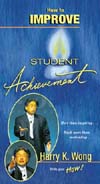
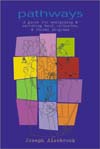


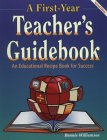
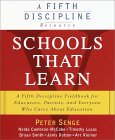

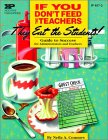
 Effective
Teaching...
Effective
Teaching...